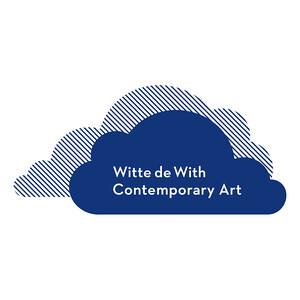Five new exhibitions with 13 international artists
September 9, 2018–January 6, 2019
Witte de Withstraat 50
3012 BR Rotterdam
The Netherlands
Hours: Wednesday–Sunday 11am–6pm,
Friday 6–9pm
T +31 10 411 0144
F +31 10 411 7924
office@kunstinstituutmelly.nl
Ana María Millán, a solo exhibition
Within the realm of fantasy, where subaltern groups may feel more at home than in reality, Ana María Millán searches for agents who expressly intend to re-signify our present, approaching animation as a tool to invent, and at times simply claim, a meaningful space in this world. This exhibition showcases the artist’s work on gaming culture and Live Action Role Play. Included are animations and watercolors portraying people Millán engaged in creating this body of work in her native Colombia, in Mexico, where she temporarily resided, and in Germany, where she currently lives.
Rosalind Nashashibi, new work
For years, the artist Rosalind Nashashibi has been in dialogue with the curator and writer Raimundas Malašauskas, who was invited to organize this exhibition. The common thread among the works in this exhibition, including paintings and a new film by the London-based artist, is an exploration of emotional relations. The exhibition premieres the first of three parts of a new film created by Nashashibi and co-commissioned by Witte de With Center for Contemporary Art, Edinburgh Art Festival, Vienna Secession, and Foksal Gallery Foundation.
A group exhibition with work by Dora García, Sharon Hayes, Emily Jacir, Mahmoud Khaled, Carlos Motta, Wu Tsang, and Akram Zaatari, as well as a letter by Quinn Latimer
This exhibition includes recent work by artists that have addressed central subjects of the epistolarity. It is organized considering the emergence of new forms of epistolary exchange, as expressed in digital missives, and, here, as manifested in visual art through theoretical fictions. The exhibition includes an annotated wallpaper and a series of public programs, which regard an epistolary visual culture. The accompanying publication consists of a letter, which you can receive by signing up to our mailing list.
Mauricio Marcín on Marcos Kurtycz
Mail art was one of the many mediums employed by Marcos Kurtycz (1934–96), a Polish artist who moved to Mexico in 1968. His “bomb letters,” which he began creating in 1981, and which consisted of systematically sending artistic missives to institutions and individuals, are among his most interesting yet rarely seen artworks. For Untitled, in Witte de With’s ground-floor gallery, curator Mauricio Marcín presents an evolving display of these.
On John Ahearn and Rigoberto Torres
Twenty-seven years after Witte de With commissioned artists John Ahearn and Rigoberto Torres to develop a public art portraying local Rotterdammers, the institution revisits these sculptures and reaches out to each of the participants. This display, within Untitled, showcases process photography and ephemera of the original project, alongside testimonies and new photographic portraits.
A number of public programs are organized in conjunction to these exhibitions, taking place at Witte de With from September through December 2018. Please consult our calendar of events for more information.
These exhibitions are organized by Witte de With’s director, Sofia Hernández Chong Cuy, and its team: Samuel Saelemakers, curator; Rosa de Graaf, associate curator; Jessy Koeiman, curator of collective learning; Wendy van Slagmaat-Bos, production officer. Guest curators: Mauricio Marcín and Raimundas Malašauskas.
Founded in 1990, Witte de With Center for Contemporary Art was conceived as an art house with a mission to present and discuss the work created today by visual artists and cultural makers, from here and afar. It organizes exhibitions, commissions art, publishes, and develops educational and collaborative initiatives. This non-profit institution in Rotterdam has especially worked with artists, and engaged audiences, who are interested in posing challenging inquiries and articulations of our present. While its program considers the contemporary, it also regards how art has been created and experienced in the past, and it imagines the futures art can come to shape.
Recently, and after a series of public debates, the institution has come to examine the origins of its name. The current consideration of our institution’s name is part of a wider discussion on decolonizing in the Netherlands. To read more about this, click here.

